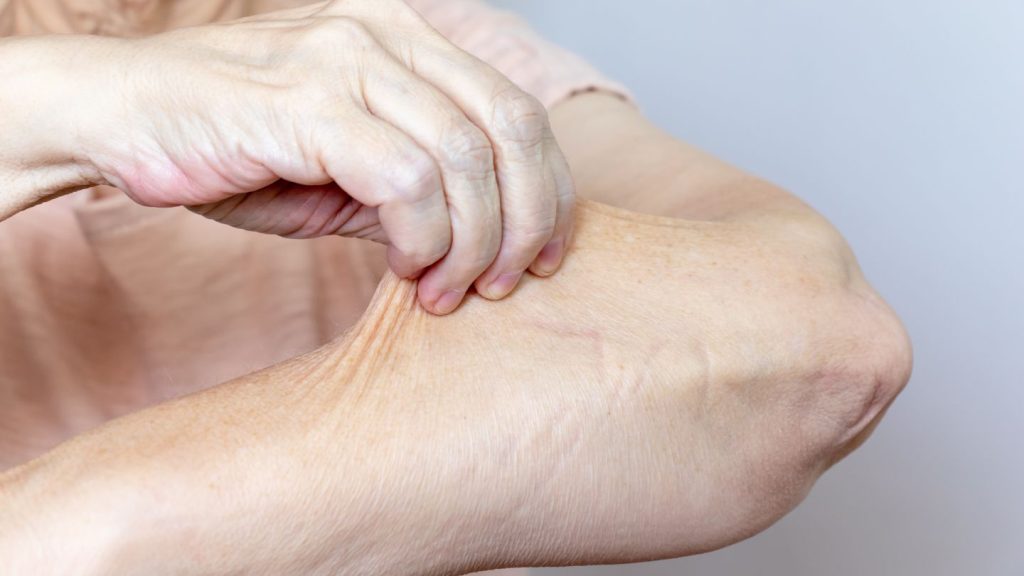
How to Manage Excess Skin After a Bariatric Procedure
Weight loss surgery transforms not just your health but your body composition. While the results can be life-changing, many patients notice excess or sagging skin as the body adjusts to rapid fat loss. This is a common but manageable concern. Understanding how to prevent loose skin after weight loss surgery and adopting strategies for skin health can help patients regain confidence and comfort as they progress through their transformation journey.
Understanding Why Loose Skin Develops After Bariatric Surgery
When a person gains weight, the skin stretches to accommodate the body’s growth. After significant weight loss, the skin may not immediately retract due to reduced elasticity. Factors such as age, genetics, and how quickly the weight is lost all play a role. Every patient’s weight loss journey is unique, and understanding your surgical options early can help you plan effectively. Learning how to know if you qualify for a bariatric procedure provides clarity on the types of surgeries available and what to expect from long-term outcomes. For some patients, the elasticity returns over time; for others, surgical or non-surgical interventions may be required.
It’s normal to experience loose skin around the abdomen, thighs, upper arms, and face. Knowing how to minimize loose skin after bariatric surgery involves a combination of lifestyle, nutrition, and medical strategies.
How to Prevent Loose Skin After Weight Loss Surgery
Although some degree of loose skin is expected, proactive care can make a noticeable difference. To better understand how to avoid loose skin after weight loss surgery, consider these core strategies:
- Lose weight gradually: Rapid weight loss gives skin less time to adjust. Follow your surgeon’s recommended pace for sustainable progress.
- Stay hydrated: Water supports skin elasticity and collagen function, helping the skin remain firm.
- Eat protein-rich foods: Protein fuels collagen production, which strengthens the skin’s structure.
- Incorporate strength training: Building muscle underneath the skin can create a more toned appearance.
- Avoid smoking: Nicotine restricts blood flow and decreases collagen, making the skin more likely to sag.
Patients managing hormone-related conditions may also see better skin outcomes when metabolic balance improves. For example, those with PCOS can explore how bariatric surgery helps improve PCOS symptoms, leading to more stable weight management and potentially healthier skin elasticity. Consistency in these habits improves elasticity over time and supports overall recovery after surgery.
How to Tighten Skin After Weight Loss Surgery

Once weight loss stabilizes, patients often explore how to tighten skin after weight loss surgery through medical or lifestyle-based approaches. Some of the most effective options include:
- Non-surgical skin tightening treatments: Laser therapy, radiofrequency, and ultrasound techniques stimulate collagen and elastin production for gradual improvement.
- Topical treatments: Medical-grade creams with retinoids, peptides, and hyaluronic acid may boost skin texture and hydration.
- Exercise: Weight-bearing exercises enhance circulation and muscle tone, improving the skin’s overall look.
- Massage therapy: Regular massages can increase blood flow and lymphatic drainage, supporting cellular repair.
Improving joint function can further support post-surgical exercise routines. Discovering how obesity affects joint health and how bariatric surgery may help can motivate consistent movement that aids skin tightening and recovery. If skin sagging is significant, your provider may discuss surgical options such as abdominoplasty, arm lifts, or thigh lifts to achieve smoother contours.
How to Get Rid of Loose Belly Skin After Weight Loss
Many patients specifically struggle with excess skin around the abdomen. Learning how to get rid of loose belly skin after weight loss often involves a multifaceted approach:
- Focus on core strengthening exercises: Planks and resistance movements tighten abdominal muscles.
- Consider body contouring procedures: When skin laxity is severe, procedures such as panniculectomy or tummy tuck surgery can remove excess tissue safely.
- Maintain steady hydration and nutrition: Balanced intake of vitamins A, C, and E, along with zinc and collagen supplements, can support long-term skin recovery.
With patience and professional guidance, most patients see gradual tightening over 12 to 24 months following surgery.
How to Tighten Skin After Bariatric Surgery Through Nutrition and Lifestyle
Proper nutrition remains a cornerstone of recovery. Incorporate foods that promote elasticity and support collagen regeneration, including:
- Fatty fish rich in omega-3s
- Leafy greens and citrus fruits
- Eggs, beans, and lean meats
- Nuts and seeds for vitamin E
Beyond nutrition, gentle stretching and mobility exercises maintain circulation and improve how the skin conforms to the body’s new shape. Those seeking to understand how to reduce loose skin after weight loss surgery will benefit most from a long-term routine focused on overall wellness, hydration, and professional care. Many patients also notice overall improvements in circulation, metabolism, and cardiovascular health. Understanding how bariatric surgery helps manage high blood pressure highlights another positive impact of maintaining a healthy weight and nutrient-rich diet post-surgery.
Surgical and Professional Options for Persistent Loose Skin

In some cases, excess skin cannot retract naturally due to loss of elasticity. Patients who have lost over 100 pounds may find surgical intervention the most effective way to achieve lasting results.
Plastic surgeons can remove excess skin, reshape contours, and restore comfort, particularly around areas prone to irritation or infections. Before considering surgery, patients should reach a stable weight and consult with both their bariatric and plastic surgery teams. Understanding how to get rid of loose skin after weight loss surgery involves weighing all available options with professional input.
Final Thoughts on Managing Loose Skin
Post-surgery skin changes are part of your body’s natural healing process. While patience is key, maintaining consistent care through hydration, exercise, and professional advice will optimize results. Knowing how to tighten skin after bariatric surgery helps set realistic expectations and ensures long-term success after your procedure.
Managing excess skin after major weight loss requires both medical insight and personalized care. Lenox Hill Bariatric Surgery Program provides comprehensive support for post-bariatric recovery, including nutritional counseling, exercise guidance, and referrals for safe, effective skin-tightening treatments. Our experts help patients achieve lasting results that reflect the health transformations you have worked hard to attain.
Frequently Asked Questions
How can I prevent loose skin after weight loss surgery?
Gradual weight loss, strength training, hydration, and collagen-rich foods help maintain elasticity and reduce sagging.
How long does it take for skin to tighten after bariatric surgery?
Skin may tighten over 12 to 24 months, depending on age, genetics, and post-surgical care. Consistent exercise and nutrition are essential for visible improvement.
What is the best way to get rid of loose belly skin after weight loss?
A combination of core strengthening, healthy nutrition, and in some cases, body contouring procedures offers the best results.
Can I tighten my skin without surgery after bariatric surgery?
Yes. Non-invasive treatments like laser or radiofrequency therapy, combined with strength training and hydration, can enhance elasticity without surgery.
When should I consider surgery for excess skin removal?
Surgery is typically considered once you’ve maintained a stable weight for at least 12 months and other tightening methods have plateaued.